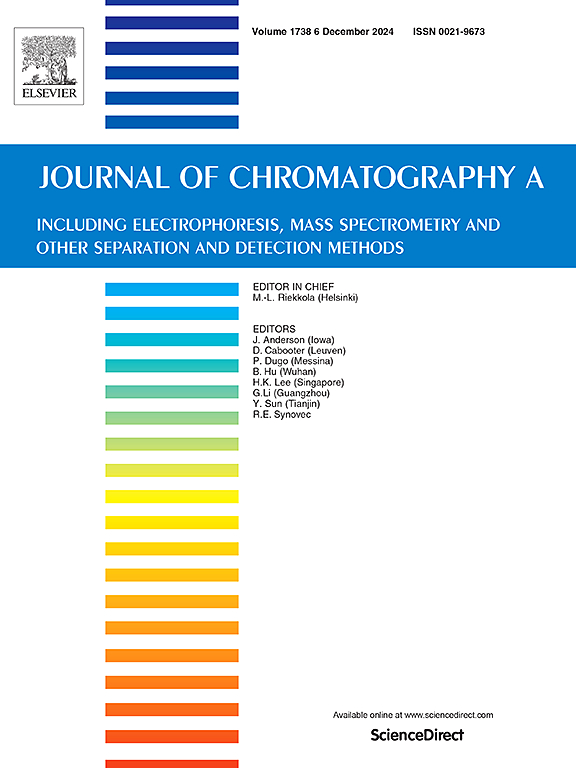在超分子水凝胶中以可重复的三维方式培养通过沉降场流分馏法分选的癌症干细胞所形成的多细胞肿瘤球。
IF 4
2区 化学
Q1 BIOCHEMICAL RESEARCH METHODS
引用次数: 0
摘要
多细胞肿瘤球(MCTS)等三维(3D)癌症模型是用于肿瘤学研究、药物开发和纳米毒性检测的生物支持物。然而,由于面临各种分析和生物学挑战,在开发这类三维模型时经常出现的主要问题是缺乏可重复性。在使用三维支撑物评估生物制剂、小分子或纳米颗粒的效果时,支撑物必须在长时间和多次生产过程中保持不变。这种恒定性可确保在分子暴露后观察到的任何效应都可归因于分子本身,而不是三维支架的异质特性。在本研究中,我们首次评估了胶质母细胞瘤癌细胞系(U87-MG)的癌症干细胞(CSCs)亚群的三维培养,以解决这些分析难题。这些癌症干细胞是通过 SdFFF(沉降场-流动分馏)细胞分选法产生的,在由单一、定义明确的分子(双酰胺双亲化合物 0.25% w/v)组成的超分子水凝胶中培养,其硬度为 0.4 kPa。选择造血干细胞是因为它们具有自我更新能力和多潜能性,可以从少量细胞中生成完全生长的肿瘤。结果表明,在水凝胶中培养的 CSCs 在第 35 天形成了平均直径为 336.67 ± 38.70 µm 的球体,这表明生长动力学具有可重复性。这种均匀性与未分选细胞形成的球状体形成鲜明对比,后者的生长模式更不均匀,第35天时的平均直径为203.20 ± 102.93 µm。使用不等方差的非配对 t 检验进行的统计分析证实,球体大小的这种差异是显著的,p 值为 0.0417(p < 0.05)。这些研究结果表明,在定义明确的水凝胶中培养的干细胞衍生球体与未分拣细胞衍生的球体相比,表现出高度可重现的生长模式,使其成为生物研究和药物测试应用中更可靠的三维模型。本文章由计算机程序翻译,如有差异,请以英文原文为准。
Reproducible 3D culture of multicellular tumor spheroids in supramolecular hydrogel from cancer stem cells sorted by sedimentation field-flow fractionation
Three-dimensional (3D) cancer models, such as multicellular tumor spheroids (MCTS), are biological supports used for research in oncology, drug development and nanotoxicity assays. However, due to various analytical and biological challenges, the main recurring problem faced when developing this type of 3D model is the lack of reproducibility. When using a 3D support to assess the effect of biologics, small molecules or nanoparticles, it is essential that the support remains constant over time and multiples productions. This constancy ensures that any effect observed following molecule exposure can be attributed to the molecule itself and not to the heterogeneous properties of the 3D support. In this study, we address these analytical challenges by evaluating for the first time the 3D culture of a sub-population of cancer stem cells (CSCs) from a glioblastoma cancer cell line (U87-MG), produced by a SdFFF (sedimentation field-flow fractionation) cell sorting, in a supramolecular hydrogel composed of single, well-defined molecule (bis-amide bola amphiphile 0.25% w/v) with a stiffness of 0.4 kPa. CSCs were chosen for their ability of self-renewal and multipotency that allow them to generate fully-grown tumors from a small number of cells.
The results demonstrate that CSCs cultured in the hydrogel formed spheroids with a mean diameter of 336.67 ± 38.70 µm by Day 35, indicating reproducible growth kinetics. This uniformity is in contrast with spheroids derived from unsorted cells, which displayed a more heterogeneous growth pattern, with a mean diameter of 203.20 ± 102.93 µm by Day 35. Statistical analysis using an unpaired t-test with unequal variances confirmed that this difference in spheroid size is significant, with a p-value of 0.0417 (p < 0.05).
These findings demonstrate that CSC-derived spheroids, when cultured in a well-defined hydrogel, exhibit highly reproducible growth patterns compared to spheroids derived from unsorted cells, making them a more reliable 3D model for biological research and drug testing applications.
求助全文
通过发布文献求助,成功后即可免费获取论文全文。
去求助
来源期刊

Journal of Chromatography A
化学-分析化学
CiteScore
7.90
自引率
14.60%
发文量
742
审稿时长
45 days
期刊介绍:
The Journal of Chromatography A provides a forum for the publication of original research and critical reviews on all aspects of fundamental and applied separation science. The scope of the journal includes chromatography and related techniques, electromigration techniques (e.g. electrophoresis, electrochromatography), hyphenated and other multi-dimensional techniques, sample preparation, and detection methods such as mass spectrometry. Contributions consist mainly of research papers dealing with the theory of separation methods, instrumental developments and analytical and preparative applications of general interest.
 求助内容:
求助内容: 应助结果提醒方式:
应助结果提醒方式:


